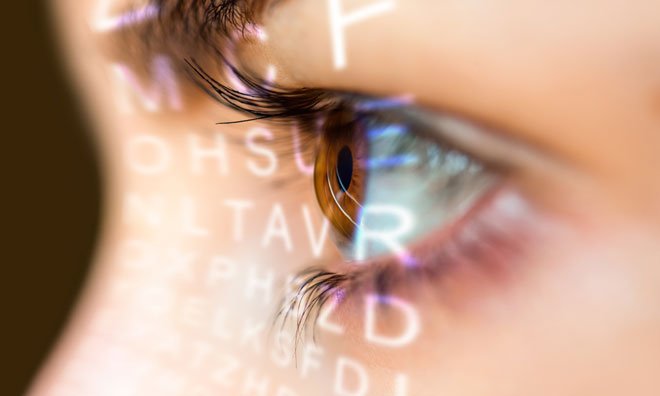FDA approves gene therapy for rare form of vision loss
Posted: 21 December 2017 | Steve Bremer (Drug Target Review) | No comments yet
FDA approves Luxturna for patients with confirmed biallelic RPE65 mutation-associated retinal dystrophy.


The US Food and Drug Administration (FDA) has approved Luxturna (voretigene neparvovec-rzyl), a new gene therapy, to treat children and adults with an inherited form of vision loss that may result in blindness. Luxturna is the first directly administered gene therapy approved in the US that targets a disease caused by mutations in a specific gene.
“Today’s approval marks another first in the field of gene therapy — both in how the therapy works and in expanding the use of gene therapy beyond the treatment of cancer to the treatment of vision loss — and this milestone reinforces the potential of this breakthrough approach in treating a wide-range of challenging diseases,” said FDA Commissioner Scott Gottlieb.
“The culmination of decades of research has resulted in three gene therapy approvals this year for patients with serious and rare diseases. I believe gene therapy will become a mainstay in treating, and maybe curing, many of our most devastating and intractable illnesses. We’re at a turning point when it comes to this novel form of therapy and at the FDA, we’re focused on establishing the right policy framework to capitalise on this scientific opening.
“Next year, we’ll begin issuing a suite of disease-specific guidance documents on the development of specific gene therapy products to lay out modern and more efficient parameters — including new clinical measures — for the evaluation and review of gene therapy for different high-priority diseases where the platform is being targeted.”
Luxturna is approved for the treatment of patients with confirmed biallelic RPE65 mutation-associated retinal dystrophy that leads to vision loss and may cause complete blindness in certain patients.
Hereditary retinal dystrophies are a broad group of genetic retinal disorders that are associated with progressive visual dysfunction and are caused by mutations in any one of more than 220 different genes. Biallelic RPE65 mutation-associated retinal dystrophy affects approximately 1,000 to 2,000 patients in the US.
Biallelic mutation carriers have a mutation (not necessarily the same mutation) in both copies of a particular gene (a paternal and a maternal mutation). The RPE65 gene provides instructions for making an enzyme (a protein that facilitates chemical reactions) that is essential for normal vision. Mutations in the RPE65 gene lead to reduced or absent levels of RPE65 activity, blocking the visual cycle and resulting in impaired vision. Individuals with biallelic RPE65 mutation-associated retinal dystrophy experience progressive deterioration of vision over time. This loss of vision, often during childhood or adolescence, ultimately progresses to complete blindness.
Luxturna works by delivering a normal copy of the RPE65 gene directly to retinal cells. These retinal cells then produce the normal protein that converts light to an electrical signal in the retina to restore patient’s vision loss. Luxturna uses a naturally occurring adeno-associated virus, which has been modified using recombinant DNA techniques, as a vehicle to deliver the normal human RPE65 gene to the retinal cells to restore vision.
“The approval of Luxturna further opens the door to the potential of gene therapies,” said Peter Marks, Director of the FDA’s Center for Biologics Evaluation and Research (CBER). “Patients with biallelic RPE65 mutation-associated retinal dystrophy now have a chance for improved vision, where little hope previously existed.”
Luxturna should be given only to patients who have viable retinal cells as determined by the treating physician(s). Treatment with Luxturna must be done separately in each eye on separate days, with at least six days between surgical procedures. It is administered via subretinal injection by a surgeon experienced in performing intraocular surgery. Patients should be treated with a short course of oral prednisone to limit the potential immune reaction to Luxturna.
The safety and efficacy of Luxturna were established in a clinical development programme with a total of 41 patients between the ages of 4 and 44 years. All participants had confirmed biallelic RPE65 mutations. The primary evidence of efficacy of Luxturna was based on a Phase 3 study with 31 participants by measuring the change from baseline to one year in a subject’s ability to navigate an obstacle course at various light levels. The group of patients that received Luxturna demonstrated significant improvements in their ability to complete the obstacle course at low light levels as compared to the control group.
The most common adverse reactions from treatment with Luxturna included eye redness (conjunctival hyperemia), cataract, increased intraocular pressure and retinal tear.
The FDA granted this application Priority Review and Breakthrough Therapy designations. Luxturna also received Orphan Drug designation, which provides incentives to assist and encourage the development of drugs for rare diseases.
The sponsor is receiving a Rare Paediatric Disease Priority Review Voucher under a programme intended to encourage development of new drugs and biologics for the prevention and treatment of rare paediatric diseases. A voucher can be redeemed by a sponsor at a later date to receive Priority Review of a subsequent marketing application for a different product. This is the 13th rare paediatric disease priority review voucher issued by the FDA since the programme began.
Related topics
Biopharmaceuticals, Gene Therapy
Related conditions
Retinal dystrophy
Related organisations
U.S. Food and Drug Administration (FDA)
Related people
Peter Marks, Scott Gotlieb



